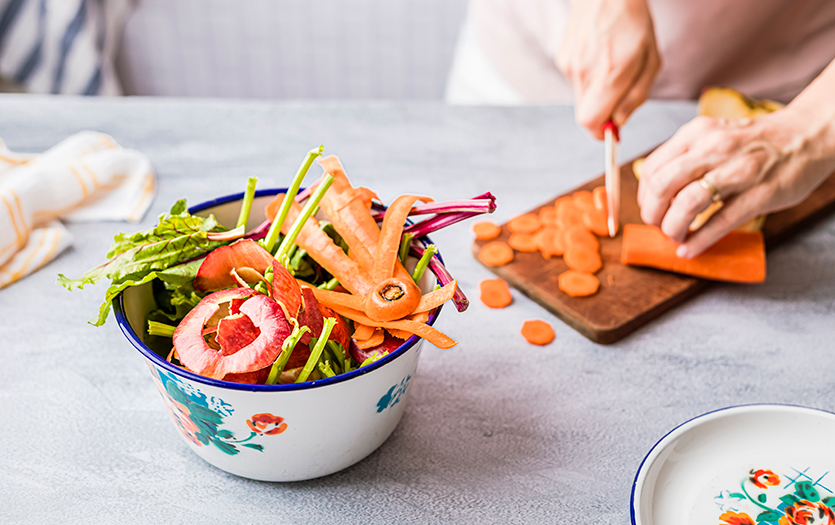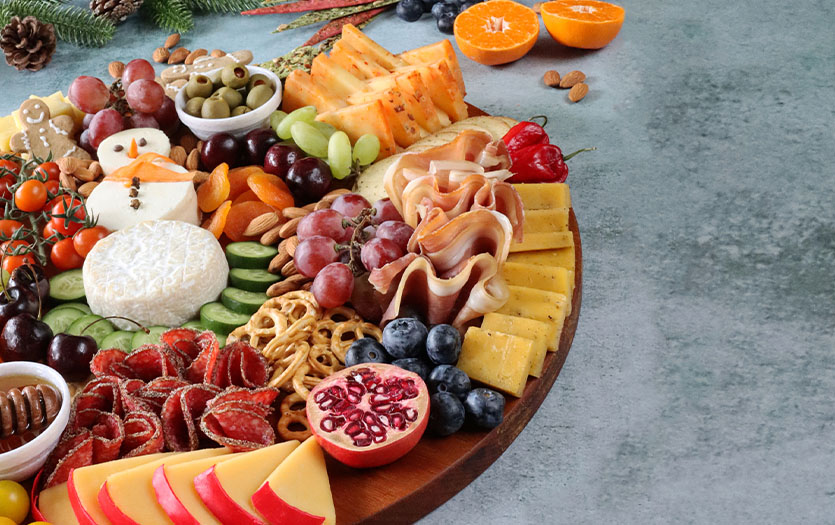
This post was written by Sarah Lemmon, RDN, LD, Nutrition Services, Parkview Health.
Have you ever upcycled a piece of furniture that was otherwise headed to the landfill? Maybe you’ve purchased a gently used item to save money but still meet your needs? Well, just like those thrifty, earth-friendly examples, you can also repurpose food! According to the United States Department of Agriculture Economic Research Service, in 2010, approximately 133 billion pounds of food went uneaten, with an estimated value of $162 billion. Decreasing food waste can have a positive impact on the environment and help lower your grocery bill. Let’s explore how you can get started today.
Vegetable scraps for stock
After peeling and dicing, don’t throw away your veggie scraps. Instead, incorporate them into a delicious broth. You can use the skins, ends, stems, stalks and cores of onions, celery, carrots, mushrooms, potatoes, herbs, tomatoes, corn, beets, parsnips, bell peppers, zucchini, squash, fennel, chards, lettuce, eggplant and green beans. Season and roast the vegetables, then transfer them to a large pot of water and boil for approximately 30 minutes. Strain the broth into a container and store or use right away. Vegetable broth is great in soups, chili and stews, or in place of chicken or beef broth. You can freeze scraps over time until you have enough for your stock.
Note that adding broccoli and cauliflower can make the finished broth bitter. Instead, try roasting the stems of these cruciferous gems and serving a cheesy broccoli and cauliflower stem soup. You can also add the stems to any stir-fry for a nutritional boost.
Fruit scraps in smoothies (and more)
If you notice your fruit is ripening faster than you can eat it, cut it up and freeze it so that you have options handy to toss in a smoothie drink or bowl. This is a great trick for overripe bananas, pineapple, melon and berries.
Frozen produce is also convenient for meals when you want to bulk up the nutritional profile. Add frozen banana to pancakes, baked oatmeal or banana bread, make muffins or brownies using frozen zucchini, or try adding butternut squash or beets to macaroni and cheese.
You can also repurpose pieces of fruit you might otherwise discard. Watermelon rind is surprisingly versatile and can be pickled, or used to make smoothies, jam, candy, stir-fry or curry. Zest citrus fruits to top salads, sandwiches and cooked grains. Strain cooked apple cores and peels to make applesauce. The options are really endless!
Extras with potential
Consider repurposing other foods as well. Stale bread is ideal for making croutons, breadcrumbs, stuffing, French toast or bread pudding. Save bones from meat and boil to make a nourishing broth. Add leftover meat to soups, casseroles or tacos. Think of leftovers as inspiration and see where they take you in the kitchen.
Enriching the earth
Composting food waste is another way to keep scraps out of landfills. Compost helps improve our soil by supporting its ability to retain moisture and nutrients. It can be added to potting soil, garden beds and used as mulch to bolster the quality of the growing environment.
The next time you have a cutting board or serving platter full of leftovers, consider it an opportunity to get creative. Repurposing your scraps will decrease your impact on the planet and bring down the total on your grocery bill, and we consider that a win across the board!



